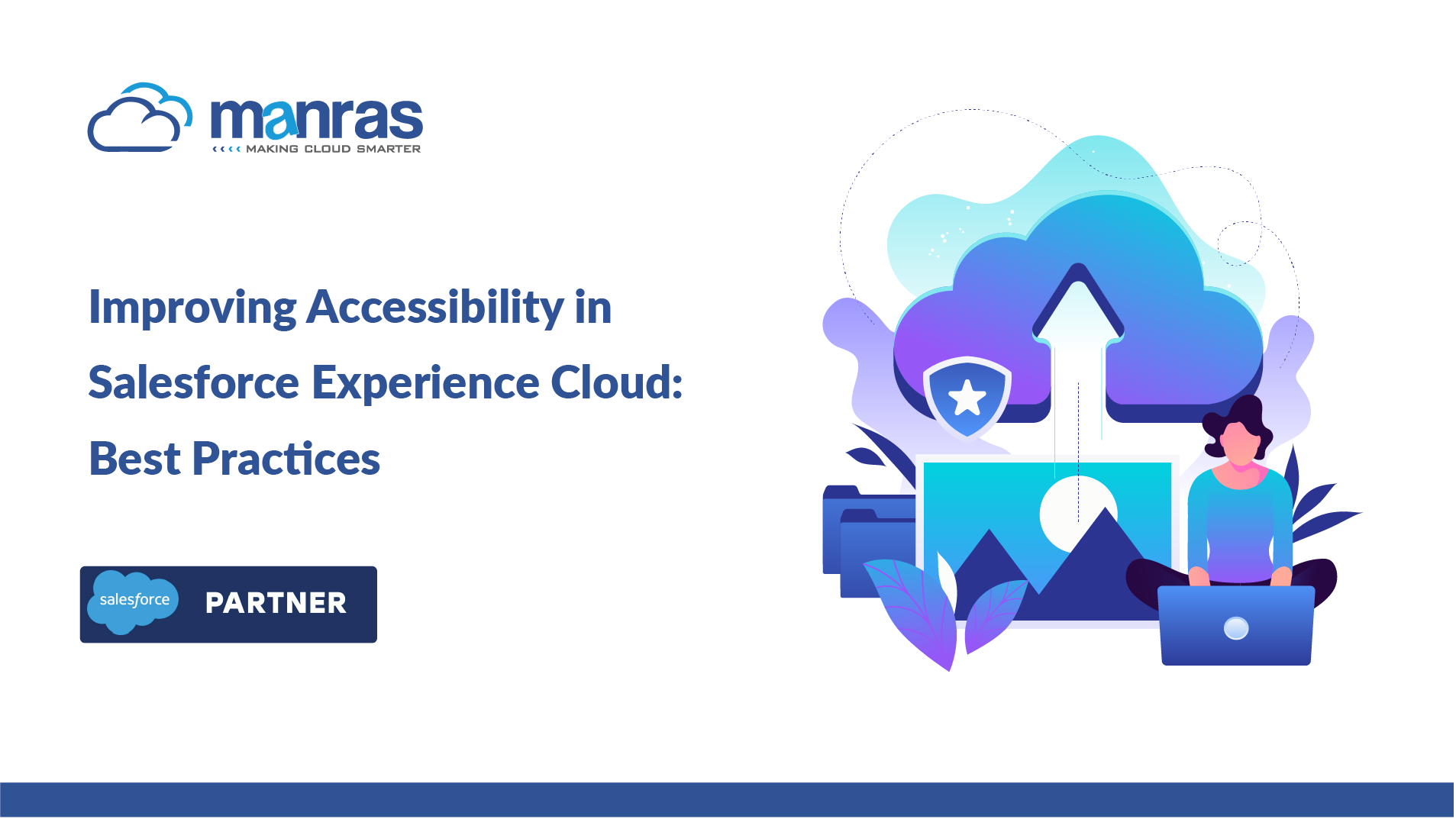
Improving Accessibility in Salesforce Experience Cloud: Best Practices
Making sure that everyone can access and use online platforms is very important for businesses. This is especially true for tools like Salesforce Experience Cloud, where creating inclusive experiences helps companies connect with more people. Not only does accessibility help meet legal requirements, but it also broadens the audience a business can reach.
In this article, we will discuss the best practices for Improving accessibility in Salesforce Experience Cloud.
Understanding Accessibility in Digital Spaces
Digital accessibility means ensuring that all digital content is usable for everyone, no matter their abilities. This involves adopting inclusive design principles so that every user can comfortably and effectively engage with online content. For businesses, focusing on accessibility is crucial as it not only builds a positive reputation but also helps attract a wider range of customers. By making digital spaces more accessible, businesses can enhance the overall user experience and reach more potential clients.
Key Accessibility Standards to Consider
For enhancing user experience for disabled users, it’s crucial to follow established guidelines. One of the most recognized frameworks is the Web Content Accessibility Guidelines (WCAG), which provides a solid foundation for businesses to create accessible content. The four principles of WCAG are:
Perceivable
All information and content should be presented in ways that users can perceive. Ensure that text and images are clear and easily visible.
Operable
Users should be able to navigate the platform easily. All interactive elements, like buttons and links, must be accessible through various means, including keyboard navigation.
Understandable
Content should be easy to read and comprehend, using straightforward language and consistent layouts. This helps users follow the information presented.
Robust
Content must be reliable and interpretable by different user agents, including assistive technologies. This guarantees access to information for all users, regardless of their abilities.
The Importance of Compliance
Complying with accessibility standards in Salesforce is important for businesses that want to create an inclusive environment. By making accessibility a priority, organizations improve their reputation and build trust with customers. This ensures that all users can easily navigate and use the platform, making it welcoming for everyone. Focusing on accessibility shows a commitment to giving everyone equal opportunities to engage with the content.
Best Practices for Enhancing Accessibility in Salesforce
Here are the best practices businesses should adopt to create a more inclusive environment in Salesforce Experience Cloud:
User Interface Design
To design an accessible user interface, businesses should prioritize clear visual hierarchies. Organizing content with headings and subheadings helps users find information quickly. A clean layout minimizes distractions and improves usability. It is also crucial to ensure sufficient contrast between text and background colors for better readability. Additionally, buttons and links should be easy to identify, using size and color to make them stand out.
Content Accessibility
Improving content accessibility is key to enhancing user experience. Businesses should use descriptive links instead of vague phrases like “click here,” as this helps users understand what to expect. Organizing information logically with headings and lists allows for easier scanning and comprehension. Providing alternative text for images is also important, as it helps users understand what the images represent and adds context.
Testing and Feedback
Regular testing is essential for identifying accessibility issues. Businesses should use tools like WAVE and the WebAIM Contrast Checker to assess compliance with accessibility standards. These tools highlight areas for improvement. Additionally, gathering feedback from a diverse range of users provides valuable insights into how the platform can better meet everyone’s needs.
Leveraging Salesforce Features for Accessibility
Now let’s look at how accessibility features in Salesforce enable businesses to create inclusive digital experiences:
Built-in Tools and Features
Salesforce Experience Cloud provides built-in tools to enhance accessibility without requiring extensive coding knowledge. Businesses can use the Rich Content Editor to easily add alternative text (Alt Text) to images, create structured headings, and set up accessible navigation menus. These tools help ensure that all users can engage effectively with the platform.
Customization Options
For organizations looking to add advanced accessibility features, Salesforce offers customization options. Developers can use HTML and CSS to improve user interfaces by applying proper heading structures and using semantic HTML for better navigation. Additionally, implementing ARIA (Accessible Rich Internet Applications) attributes can enhance user interaction, ensuring a smoother experience for all users.
Conclusion
In conclusion, prioritizing accessibility in Salesforce Experience Cloud is essential for creating inclusive digital environments that engage all users. By implementing best practices in user interface design and content accessibility, along with leveraging built-in tools and customization options, businesses can significantly enhance user experience and comply with important standards.
For organizations looking for expert help, partnering with a Salesforce certified consultant like Manras can be invaluable. Manras assists businesses in addressing accessibility challenges and implementing effective strategies within the Salesforce platform, ensuring all users can engage with their content easily.



